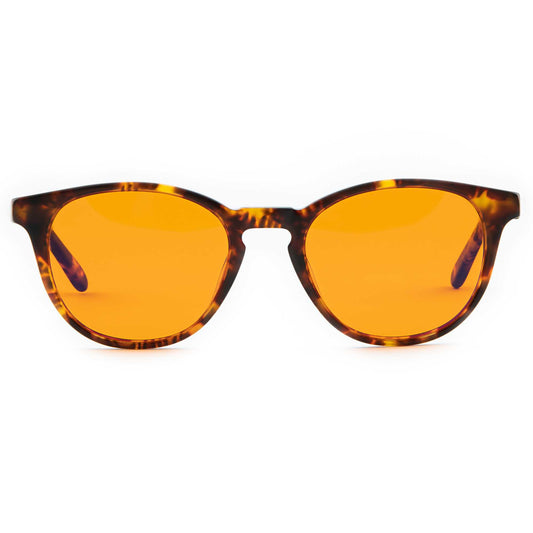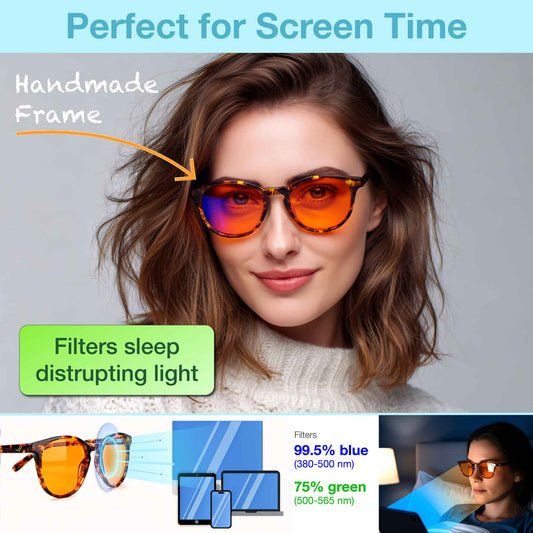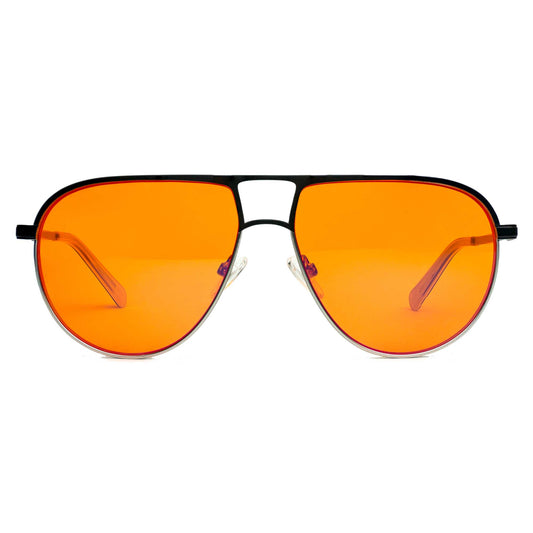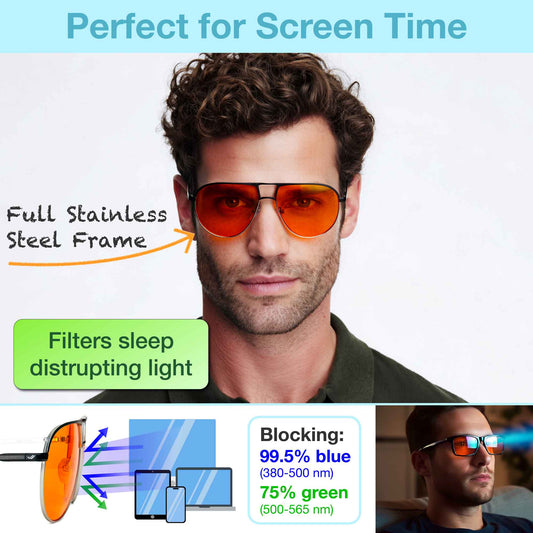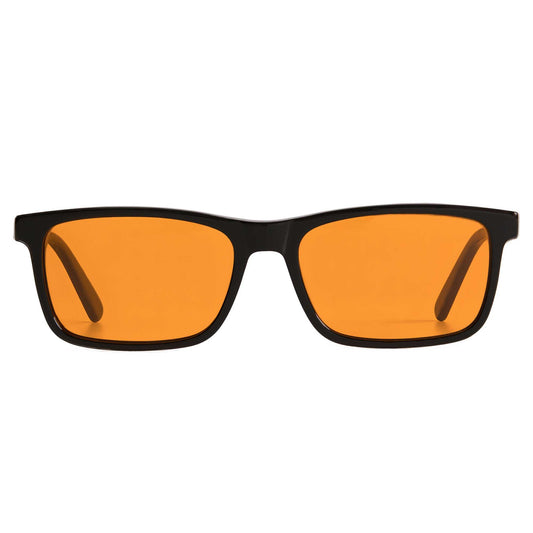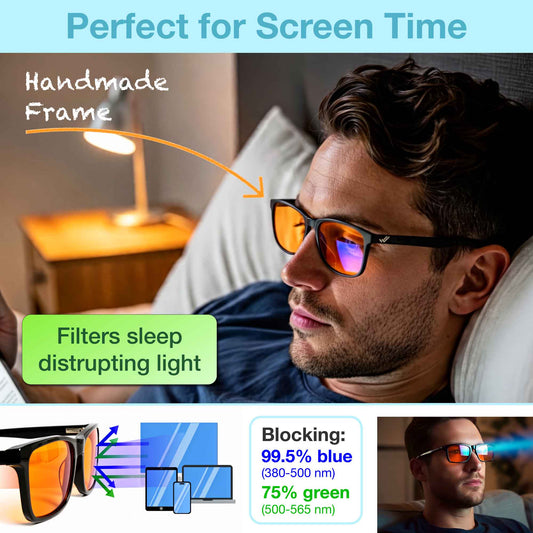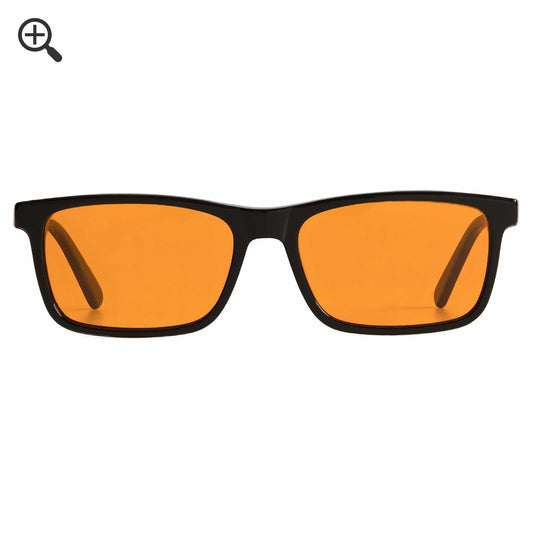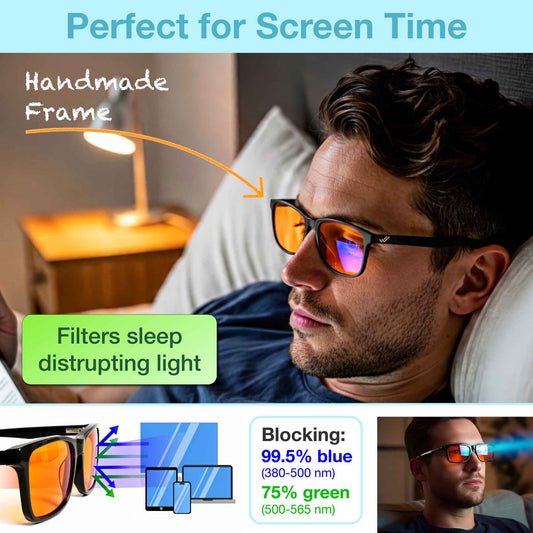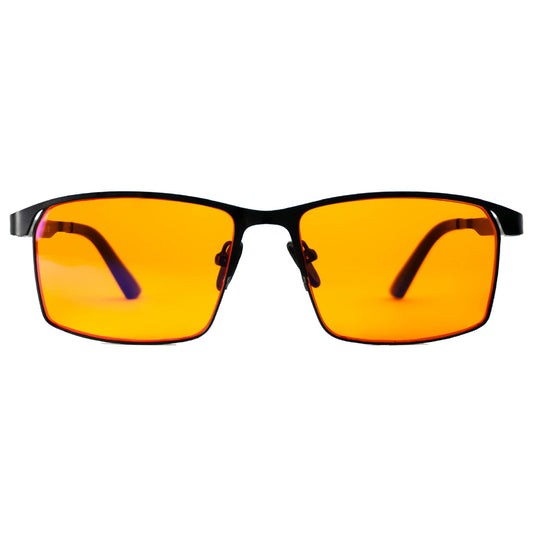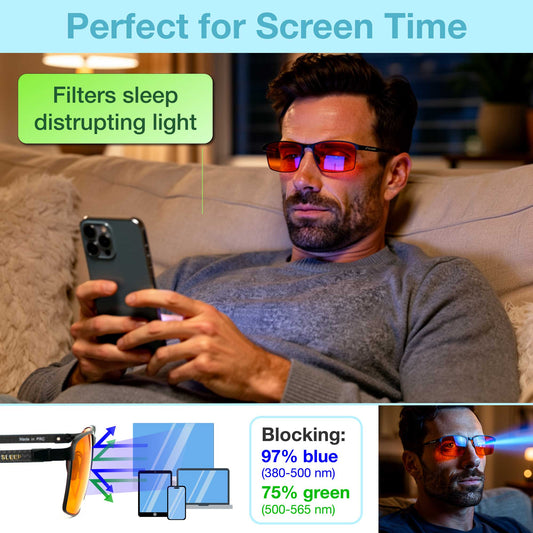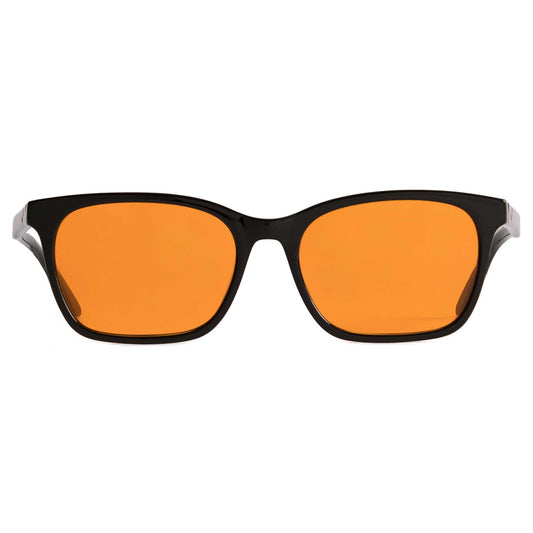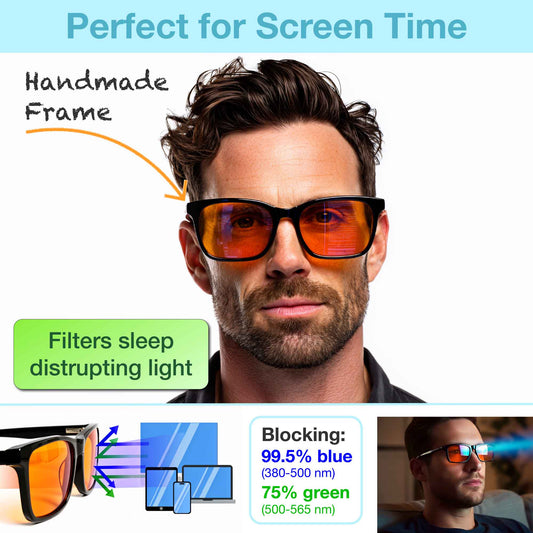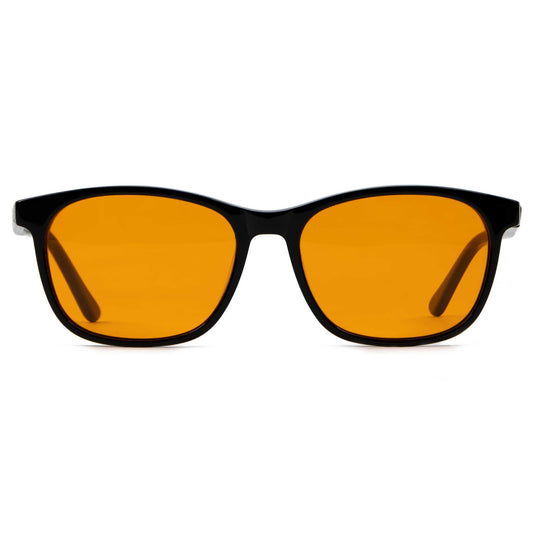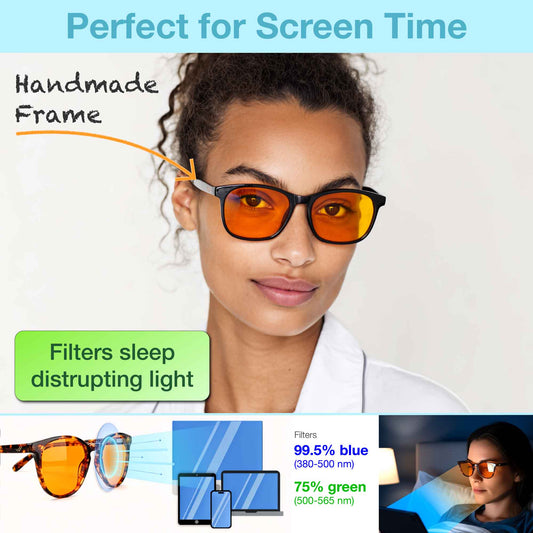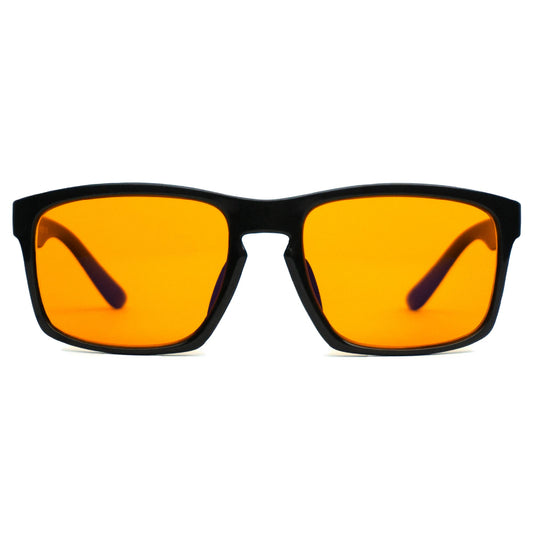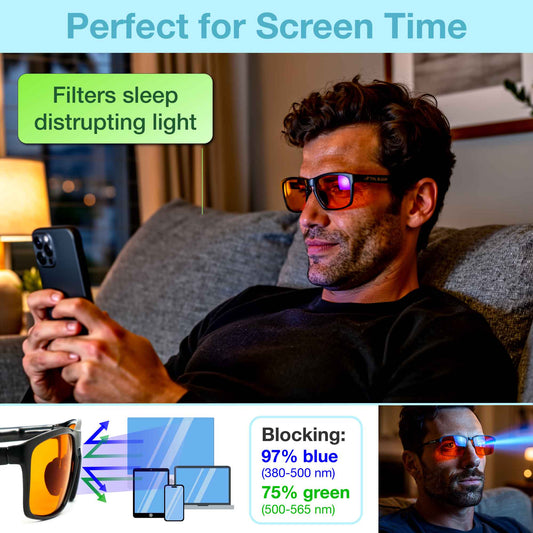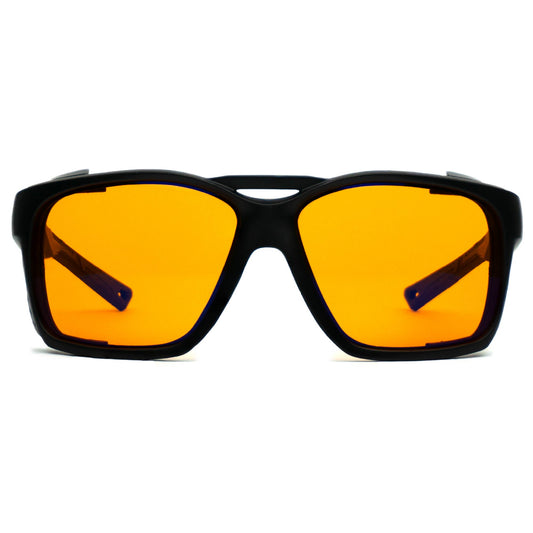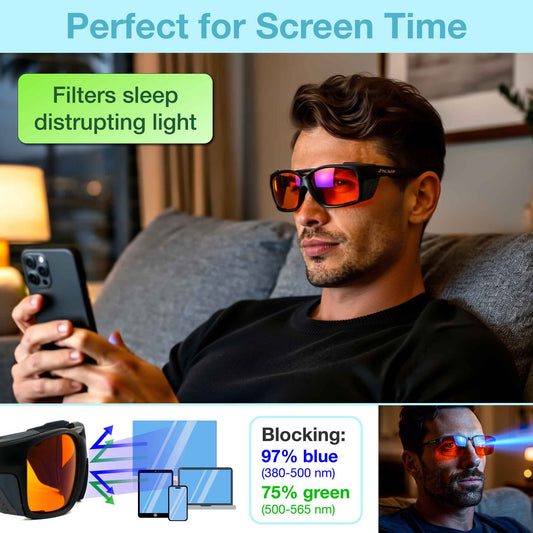Blue light glasses with the right kind of lenses can be a great help in improving your sleep at night. To get a pair that really will work, it is important to choose a pair that filters out the most melatonin-disturbing light.
In this article, you will learn how to test blue light glasses and computer glasses. It will give you a simple way to tell if you have the best blue light computer glasses and if they work as intended.
Why use a blue light glasses test?
To test blue light glasses, you have to learn some of the basics of the melatonin disturbance zone and perform a simple blue light test.
There are some quick and easy at-home tests to use to tell if your glasses have complete blue light protection. Everything gathered in this article is to help you effectively manage exposure to blue light.

The best blue light glasses for sleep have orange lenses, combining the best blue light filtration performance and clarity.
Blue light glasses – the different kinds of blue light blocking lenses
There are many blue light filter lens colors, which makes it essential to understand the different performance and clarity these will offer and when they are suitable to use.
With colors ranging from clear transparent lenses all the way to deep red, here is a summary for each option and typical use case.
Computer glasses – clear lenses
As the name suggests, these glasses are made to be used when working on your computer or smartphone or while watching TV.
Their purpose is relieving your eyes from digital eye strain and filtering out light rays at the start of the blue light spectrum.
The best computer glasses filter 25–30% of all blue light.

Night driving glasses – Yellow lenses
Yellow blue light filter lenses are suitable to be used when driving at night.
Compared to the clear lenses, these are good at removing more of the highest energy blue light, around 440 nm, but are still clear enough to easily distinguish traffic lights and for driving at night.
With more and more cars coming out with LED light technology, this type of blue light glasses is highly recommended for driving at night.
These generally block around 65–70% of blue light when benchmarked with a blue light test.
This means that this color lens fails to block out the blue light that affects your sleep hormone the most (460–480 nm).
Blue light glasses for better sleep – Orange lenses
The best blue light glasses for sleep have orange lenses. A well-balanced lens for sleep filters out 100% of the most melatonin-disturbing light and is easy to see through.

Compared to yellow lenses, orange lenses are slightly darker, making them unsuitable for driving.
Premium orange lenses for sleep block 99.5–99.9% of all blue light as well as a large amount of the green light spectrum, from 500 to 565 nm.

Blue light blocking glasses for sleep – Red lenses
Red lenses are often marketed to be better for sleep improvement than orange lenses.
The issue with these deep dark red lenses is that they are hard to see through for negligible improvements for sleep compared to orange lenses.
They risk putting unnecessary strain on your eyes, comparable with using sunglasses indoors, so your eyes have to work hard to see anything. Most of the extra light these filter out are in the safe yellow, orange, and red spectrum.
Red lenses can filter out the same amount of blue light as orange lenses, generally around 99.5–99.9%.
How to test blue light computer glasses (Clear lenses)
1. Get the official blue light spectrum report data
To find out if a brand's blue light glasses are the best computer glasses you can get, you have to get some numbers from the companies' blue light filtering test data.
Premium blue cut lenses that filter out the recommended 30% of all blue light and include anti-reflective coatings are costly to manufacture. This means that any computer glasses cheaper than US$40 likely lack these essential features.
So, make sure to buy yours from a reputable brand that can supply detailed lens data or a complete lens report.
2. Perform the blue sky computer glasses blue light filter test
It is as easy as it sounds. Just wait for a clear day and hold your glasses towards the blue sky.
During normal wear, the lenses look clear, but they actually have a slight yellow tint if filtering the recommended 30% of blue light. The filtration is mostly at the start of the blue light spectrum, which is also called blue-violet light.
When looking through the lenses towards a clear blue sky, you can more easily see this light being filtered away by the lenses. As seen in the picture below, a slight yellow tint will appear with the best computer glasses.

How to test blue light glasses for better sleep
As for the best computer glasses, you can quickly see the difference in performance with an easy blue light glasses test.

You can find two easy at-home blue light filter tests below to tell if your glasses block all blue light.
For better sleep, the entire blue light spectrum must be filtered out.
1. Get the official blue light spectrum report data
As you know by now, you should ask the brand for exact lens data as a first step before any lens testing starts.
In this way, you can save money by verifying the performance before you place an order.
2. RGB color wheel blue light glasses test
The following test indicates how good your glasses are at filtering out blue and green light.
- Put on your blue light–blocking glasses.
- Look at the chart and see how close to black the blue circle (B) becomes.
- For a good test result, the blue circle should become dark gray, and the cyan color blends in with the green circle.

3. Black and blue circle test for blue light glasses
- Put on your blue light–blocking glasses.
- Look at the picture and study the color of the blue portion.
- For a good result, the blue circle in the middle should look dark gray when looking through your blue light–filtering lenses.


Better Sleep Starts Tonight
Protect your eyes and improve your sleep with THL SLEEP’s orange lens blue light glasses. They block 99.5% of blue light and 75% of green light – wavelengths that keep you awake at night.
Not all blue light glasses live up to their promises — but these do, and you can see it for yourself. When you put them on, that glaring blue on your device transforms into a mellow amber.
Try them with a 100-Day Risk-Free Trial.
💡 Blog Reader Offer: Use code SLEEPBLOG for an extra 5% off your first order on Amazon!
🛒 Shop Sleep Glasses NowHow blue light glasses are tested professionally
The tests found above are great ways to tell if your blue light glasses work as intended. They are really useful to see if most blue light is filtered out.
The only way to accurately measure how much green light a blue light blocker lens filters out is to use a visible spectrometer. This instrument can measure the exact green light–filtering capacity with high precision.
An essential part of how this type of expensive laboratory instrument works is that the light used during lens testing is standardized. This means that the incoming light contains all the colors needed to perform an accurate test.
With this understanding, it is easy to see that a handheld visible spectrometer can't give accurate spectral analysis test results. Any measurement taken using a non-standardized light source, such as a laptop screen or other random light source, can't be trusted.

Any claims of how much green light is filtered out using this non-scientific method via charts or live demonstrations is just false marketing. In this case, the result is totally dependent on the light source with its colors and brightness.
Summary
As you can see in this article, it is easy to see how effective your blue light–filtering glasses are at blocking out blue light.
When it comes to the green light filter performance, the only way to get a reliable result is to test with a lab-grade visible spectrometer using a standardized full-spectrum light source.
To get a pair of premium blue light–blocking glasses for sleep developed with science, pick up a pair of THL Sleep blue light glasses today.
Share this article to help others to protect their eyes naturally.
Happy Deep Sleep,
Oskar Eriksson, M.Sc.
The Sleep Engineer™





